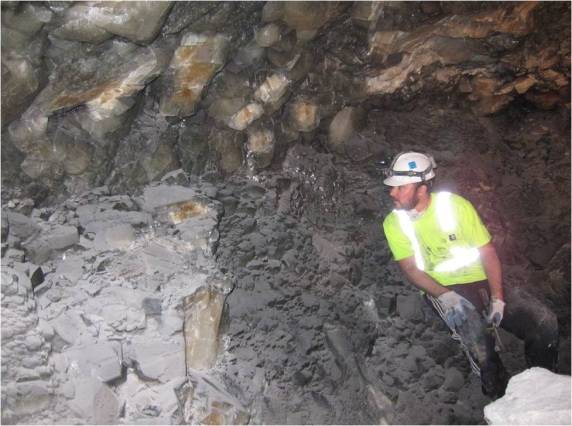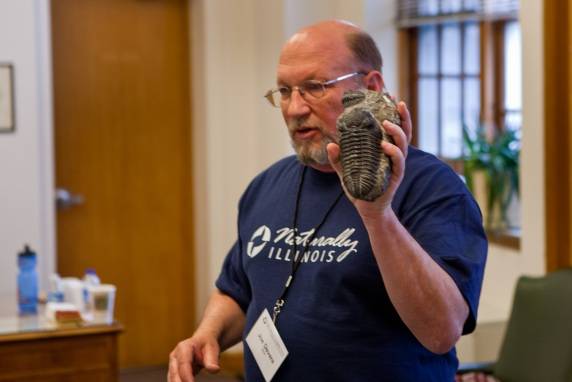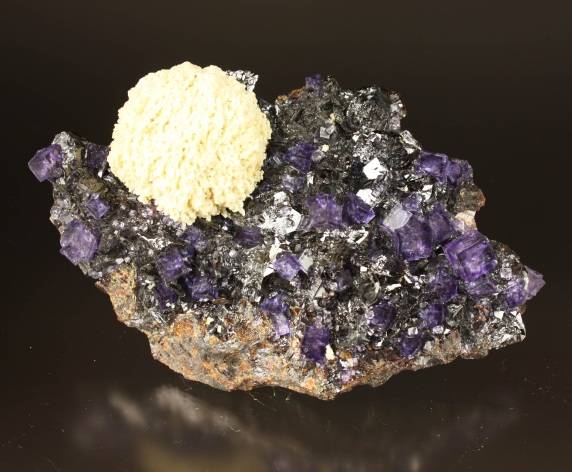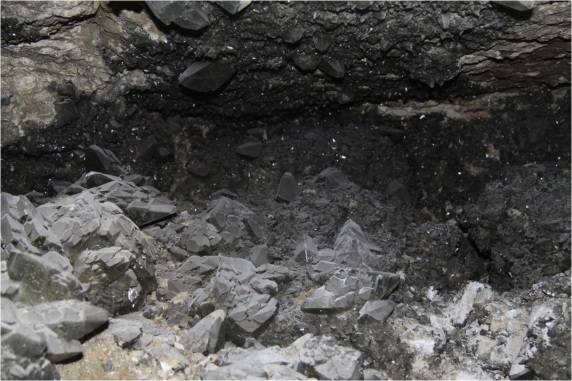The Illinois State Geological Survey has stated its intent to begin forming a new exhibit. Dubbed the Geology of Illinois Gallery, the exhibit will have on display fossils and minerals from all over the state, some of which will date back to prehistoric times. The gallery will eventually call a 525 square foot space on the first floor of the Natural Resource Building on the University of Illinois campus its home, but the process leading up to final construction is expected to take at least one year.
“It’s not going to happen overnight,” Jared Freiburg, 32, said. “Our committee had our first meeting last week, so we’re at the very beginning stages of this thing.” Freiburg, a geologist and mineral salesman, has worked for the Illinois State Geological Survey for the last six years. His vision for the gallery is that it will provide visitors with “a walk-through of the geological history of Illinois.”

Jared Freiburg
To accomplish this, Freiburg and the other seven committee members will create rotating themes that will illustrate the geological transformations that occurred in not only what is known today as Illinois, but in the world as a whole. Themes such as “Evolution” and “Plate Tectonics” will grant visitors a window into deep time ranging from ten thousand to five hundred million years ago.
According to Freiburg, the diversity of the committee will be key. “Each member is a sort of specialist in their own field,” he said. “There’s a mineralogist, a geologist, paleontologist, members with a background in museum design as well as public outreach. One member is a librarian, so the cataloging [of specimens] will be taken care of.” Freiburg went on to say that he believes the committee’s paleontologist, Joe Devera, to be the most talented in his field in the entire state. “He’ll turn anyone into a fossil nerd,” Freiburg said of his colleague.

Joe Devera
Devera, 58, has worked for the Illinois State Geological Survey for 27 years. Currently, Devera is stationed at the Survey’s offices in Carterville, Illinois, where he geologically maps the bedrock, walking the banks of the Mississippi River and surrounding creeks. He will be putting together the fossil portion of the Geology of Illinois Gallery.
“We already have a number of fossils at the Survey,” Devera said. “I also plan on putting some fossils from my personal collection on loan.”
Regarding his role in creating a theme like “Evolution,” Devera plans to use fossils from outside state lines when applicable. “We’ll stick mainly to Illinois and parts of the Midwest,” he said, “but to show how evolution works in cases like isolation, we’ll be using specimens from other places.” Already in possession of fossils from Morocco, France, Germany, Russia, and Czechoslovakia (amongst others), Devera believes he’ll be able to show how things changed over time to form what we see around us now.
“All those years ago, it didn’t look like it does today,” he said. “Things were connected. For example, what we call the Illinois Basin now was actually just one of several basins that were connected at one point in time.” The evolution present in Devera’s fossils will allow visitors to see how animals changed along with their surroundings.
Though both Devera and Freiburg have a clear idea in mind for the exhibit, the two men share a few concerns. “A huge reason why this committee was formed is to get donors,” Devera said. The Geology of Illinois Gallery will rely on both financial donations and specimen donations in moving forward. “In a sense we’re starting this completely from scratch,” Freiburg said. “We’re hoping people will come through.”
“We’re going to try and get funding in various ways,” Devera said. “I know people around the basin area that are into oil, into science, that would really love to see something like this get put together.”
“We’re looking to put the best on display,” Freiburg added. “A lot of these top specimens are in private collections, and it will be tough to get people to part with them.” Freiburg will stress the legacy that each donor will leave in contributing to the gallery. Working as a mineral salesman in addition to his position at the Geological Survey, Freiburg has firsthand knowledge of where many of these highly touted specimens are currently residing. “We have the resources and connections. A lot of mineral people just have a tough time donating because they think their stuff will end up in storage somewhere,” he said.
To combat this problem that seems to plague donors who choose museums, Freiburg and his team will construct a fully accessible database that will let the public conduct searches on every specimen housed at the gallery. “This is something that no museums are doing,” Freiburg said. “Anyone will be able to search for a donor, search for a type, a locality, but most importantly they’ll be able to find out where a given specimen is. They’ll be able to find out where it’s at if it’s on display and where it’s at in storage if not.”
“It does happen where things can just ‘walk off’ if not protected properly,” Devera said. “We will have a security system in place, cameras and things like an alarm system if you were to try and break in.”
Devera and Freiburg are learning just how much work putting together a gallery up to their standards will be, but the determination from both is evident. “If we don’t do it first class, it’s not going to happen,” Devera said. “Jared’s the same way. It’s all or nothing.”
Before the committee’s first meeting, Freiburg attempted to donate a 300 pound crystal to the Field Museum located in Chicago. To his surprise the renowned museum doesn’t have a mineralogist on staff. This only fueled Freiburg’s passion to push for the new gallery. “They [the Field Museum] don’t care about minerals. So I thought, that’s fine; if they don’t care we’ll put together our own museum, our own gallery here.”
Freiburg was also spurred on by the fact that Illinois is home to the world’s most famous fluorite deposit in the historic Fluorspar Mining District of southern Illinois. “Ask anyone who knows anything about minerals, and they’ll tell you Illinois is the best location for fluorite,” Freiburg said. “Right now, the Smithsonian probably has the best display of fluorite, but they have everything. I thought, ‘We’re Illinois, shouldn’t we have a collection?’ There’s no one in the state that has a good collection of fluorite on display for the public.”

Fluorite
After bringing this to the attention of the Geological Survey’s director, the rest was history, so to speak. The Survey has put the future of the new gallery in the hands of the committee. Freiburg and Devera wouldn’t have it any other way.
“My goal is purely to see a really nice gallery at the Geological Survey,” Devera said. “I’ve been there 27 years, and we’ve had some nice displays but they’re pretty old fashioned and out-of-date. It’ll be nice to have something world-class.”
“I treat specimens like a Van Gough in a way,” Frieburg said. “No two mineral specimens are alike.” The Geology of Illinois Gallery will function as a means to harvest an appreciation like that of Devera and Freiburg’s for the area’s natural beauty and history. “You know, it’s the Midwest,” Freiburg said. “Everyone sees it as flat. The way I think is 5,000 feet down into the rock. That’s where my mind is constantly. I see a different geography.” Time will tell if the Geology of Illinois Gallery will do these “Van Gough’s” justice.









